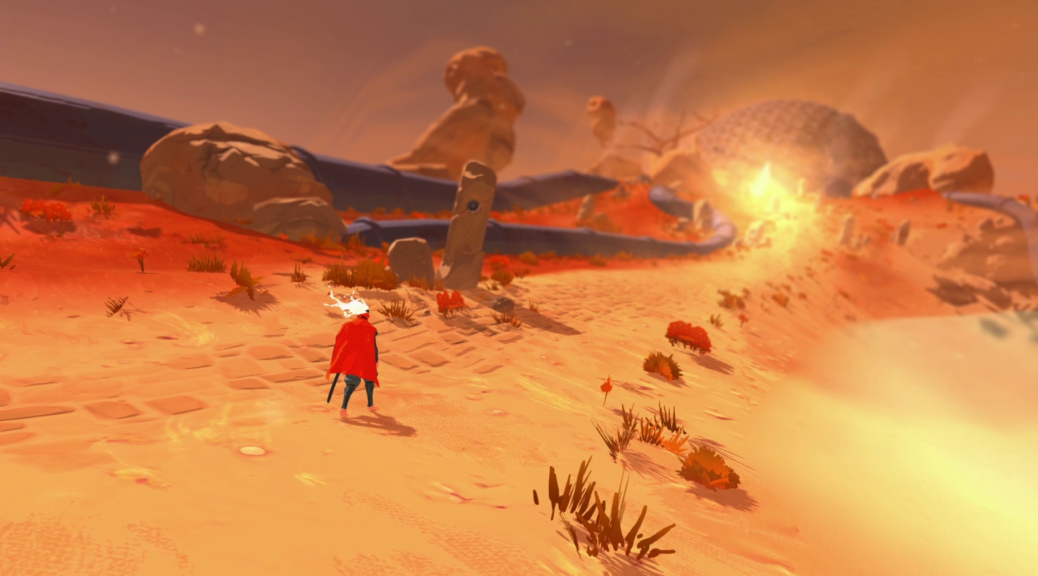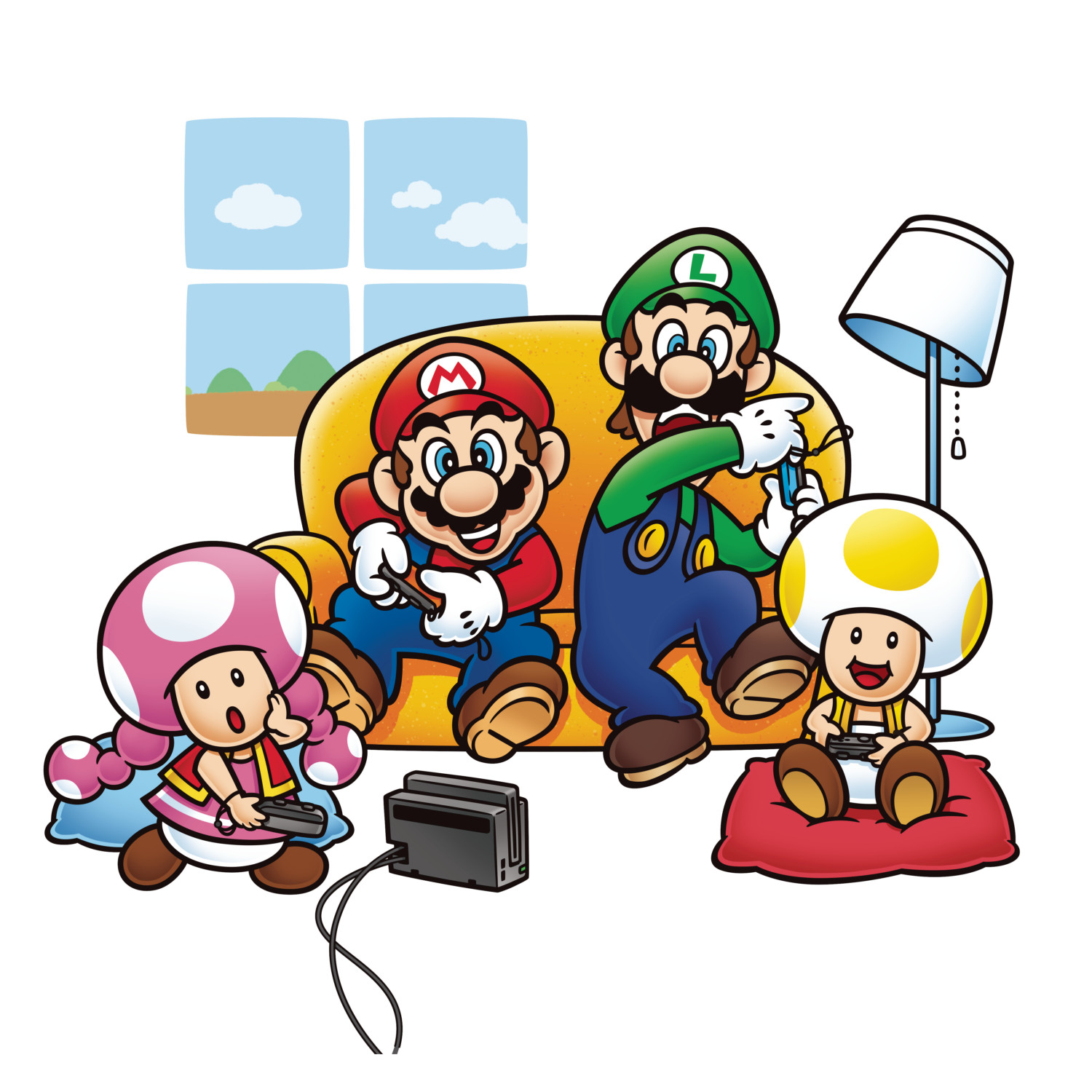
Game Review: Furi (Switch)
Furi begins without much exposition. We’re introduced to the nameless player character being beaten and tormented by a menacing jailer on a stormy floating island. A mysterious hooded figure arrives, frees the player, and encourages him to escape with these words: “The jailer is the key. Kill him, and you’ll be free.”

And just like that, you’re into the game’s real meat: the fights. There are only 10 or so enemies in the main story, but the game makes each encounter a significant event. Combat in this game really feels good once you get the hang of it, and the controls are intuitive enough that this doesn’t take long. “Easy to learn and hard to master” rings true. Fights are broken up into several stages that require persistence, quick reflexes, and a bit of memorization to defeat, so it’s virtually guaranteed that it will take at least a few tries to take each boss down. But despite the difficulty, the game is quite fair. You’re given three lives to use in each fight, and progressing to the next stage refills your health and restores a life if you’ve lost one. It’s only when all three lives are depleted that you need to start the fight from the beginning. And chances are, you’ll have improved enough that the first stage will be a relative breeze.

The Rider can damage his foes with a long-range laser weapon, or get up-close and personal by hacking and slashing. The method of attack you’ll use is largely determined by the enemy’s attack patterns: they usually start out at long range, encouraging you to return fire with your own laser bullets, and then move in, constraining you to a smaller area for melee combat as they unleash long strings of attacks. Defensively, the Rider can dash-dodge invincibly through most ranged attacks, but it’s less reliable in close quarters. You also have a parry/counter move at your disposal, which is necessary for defending against physical attacks, but which can also be used to deflect projectiles. A charged slash perfectly timed parry allows the Rider to unleash a devastating combo, eating away a decent chunk of the enemy’s life bar. The player always has options, and it’s satisfying to experiment. You can play safely and defensively, but as you learn each boss’s attack patterns, you’ll become more aware of openings to be more aggressive and risky.

After you defeat the first boss, you pass through the gate and descend to the next level of the prison, bringing you closer to the planet’s surface. The game’s action cools down significantly between battles. You can set your character to auto-walk (recommended) down the linear pathway to the next boss, while the rabbit-hooded character follows, encouraging you to keep moving toward escape and revealing information about your next foe. I certainly appreciated what the game was trying to do with these walking segments. It gives you the chance to appreciate the truly beautiful environments on display, and enjoy the game’s outstanding electronic soundtrack. The bunny-hooded character is voiced brilliantly, he’s written quite well, and the dialogue offers some truly interesting information about the game’s world. However, it must be stated that the walking segments are not skippable outside of a speedrun mode that unlocks after completing the game. And there is certainly a subset of players that would simply prefer to get right into the action, thank you very much.

But for me, I really enjoyed the game’s story. Despite all enemies using similar attacks (although there is plenty of variety in the execution), each fight feels emotionally distinct. This is conveyed through both the boss’s dialog and their attacks. The first jailer is menacing, threatening, tormenting, and unforgiving. Another is bitter and vengeful. Yet another fights you with the honor and courage of a warrior. But one common thread runs through the motivation of each of your foes: they are willing to give anything, including their lives, to prevent you from escaping your prison and reaching the surface of the planet below. The question of “why?” is always in the back of your mind, and the answer to this question is just satisfying enough to make it worth the journey. Just make sure you keep playing after the credits.

The game looks good on the Switch, in both handheld and docked. The most visually impressive moments are the environments on display in the walking segments. The colors and design of the landscapes around you are breathtaking, and it made me wish they were more open for exploration. Admittedly, these cinematic interludes have a, uh, cinematic frame rate at times. It’s a slowdown comparable to some of the busier towns in Breath of the Wild, but since there is no gameplay in the walking segments, it is not a big deal. Fortunately, during the boss battles themselves, the frame rate is buttery smooth. There were some dropped frames, but they were extremely rare. I can confidently say that I never died or took damage due to frame rate hiccups.

My first play-through of Furi took me about five and a half hours on Furi (normal) difficulty; the playtime is highly dependent on individual skill. Some will be faster, some will be slower. But if you’re the type of person who can beat the game quickly, worry not. Completing the game on Furi unlocks the Furier (hard) difficulty. Bosses have new attacks and patterns, and they are a lot tougher the second time around. You can even chase after higher rankings on each boss on both difficulties. And if that wasn’t enough, the Switch release includes the “One More Fight” add-on content: two additional bosses that provide hours of challenge. Seriously, I’m still trying to beat the first one on Furi difficulty.
IN CONCLUSION
Pros
- Satisfying combat with depth
- Compelling story
- Stellar electronic soundtrack
- Gorgeous art direction
Cons
- Unskippable walking segments between bosses
Soup Verdict: A perfectly crafted recipe.

A code was provided by The Game Bakers for this review.
